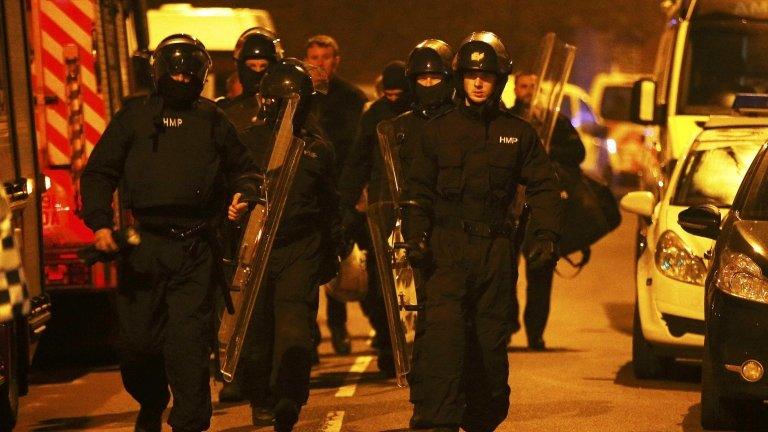Photographer's exhibition inspired by Birmingham prison inmates
- Published
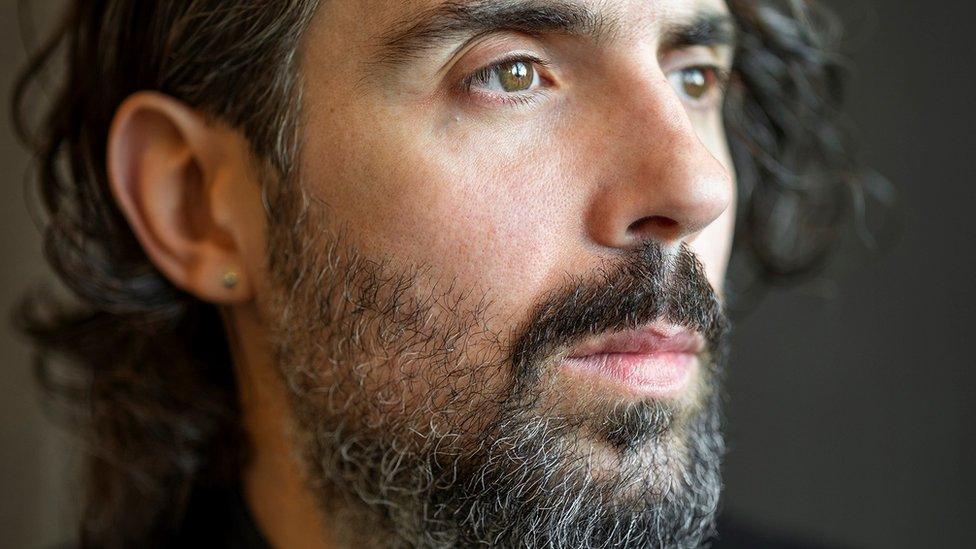
Edgar Martins had started his research at the prison when a 12-hour riot broke out there in 2016
Portuguese photographer Edgar Martins has captured more than 100 images for his project on incarceration and confinement at HMP Birmingham.
He deliberately shot abstract pictures after spending three years getting to know inmates and their families during a tumultuous time at the jail before the pandemic hit.
His exhibition What Photography and Incarceration Has in Common with an Empty Vase is at Herbert Art Gallery and Museum, in Coventry, until 18 April.
"In the same way that an empty vase contains an absence, an emptiness, photography at its heart also contains an absence - in the sense that there is something always missing from a photograph," he said.
Martins had started his research when a 12-hour riot took place at the jail in 2016 - the worst disturbance since the Strangeways jail riot 31 years ago - the arrival and departure of several directors and ultimately the privately-run prison being taken back under government control.
"I could see there was something drastically problematic within the prison, but the bosses were very honest about the problems," he said.
"There was a real detachment with the staff and top management, but the staff did engage with with families and inmates and were much more caring."
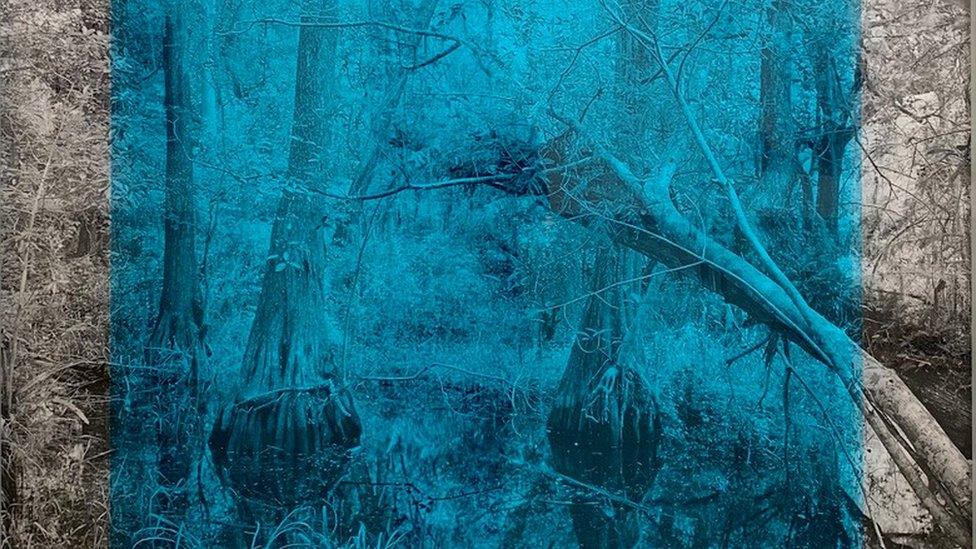
The image of a blue forest is of the Everglades, in Florida, where an inmate last went with his family on holiday
Sky Blue is an homage to an inmate who was in one of the darkest cells Martins said he saw in the jail. The image of a blue forest is of the Everglades in Florida where he last went with his family on holiday.
"It was almost like a converted store room in a corner of the prison with very small window," he said.
"He was two years into a 10-year sentence and he'd asked his family to smuggle in yellow and blue felt-tip pens because he wanted to paint the colour of the sun on the wall and some blue sky, which he did and it took him months to do.
"Pens can be seen as weapons, and it's poetic that he wanted a pen and not drugs or anything else."
Martins collaborated with Grain Projects, a Birmingham-based art group. Through them he was able to speak to relatives who gave him access to family therapy sessions as he sought to portray prison life in a different way.
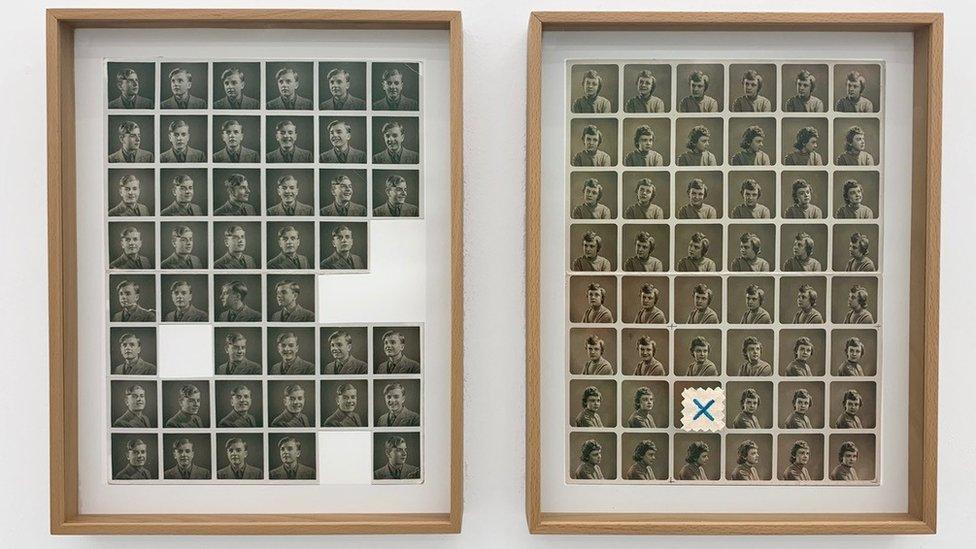
The inmate who inspired this work, Life Is No Panacea, used some passport photos to commit fraud
The passport photos are from an inmate and his wife taken in the early 1960s, Martins said.
It was his sixth sentence for fraud and the photos were taken before he first went to jail.
"You see there are some missing from him because he said he used them to commit the fraud," he said.
"The cloth stitch is a reference to embroidery he had in his cell... it was something from [his wife's] grandparents and I thought it was interesting and I wanted to use it."
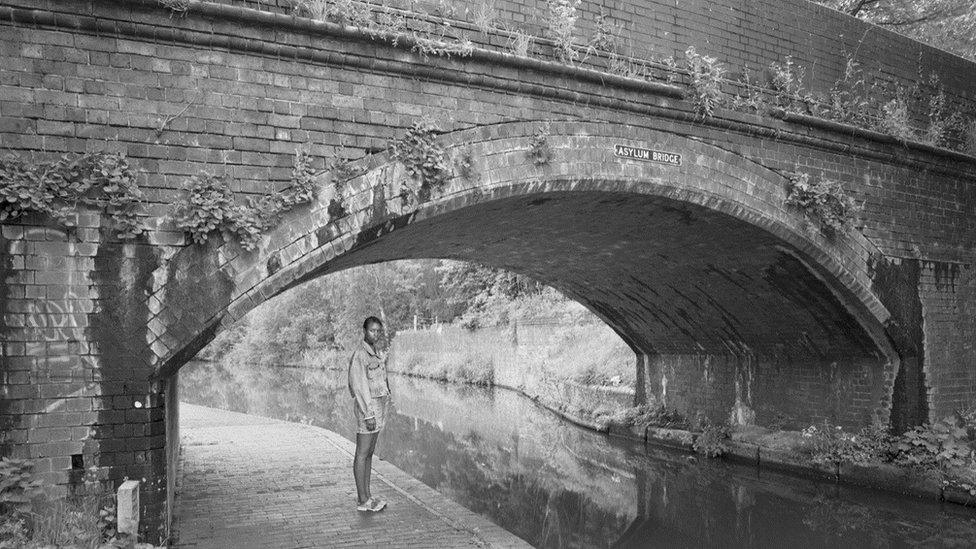
This partner of an inmate had just visited him as he began his jail term
I'm A Celebrity Get Me Out Of Winson Green depicts the partner of a prisoner after she had just visited him as he started a lengthy sentence, Martins said.
"She had just seen him and this is her kind of thinking 'what will be her life now?'," he said.
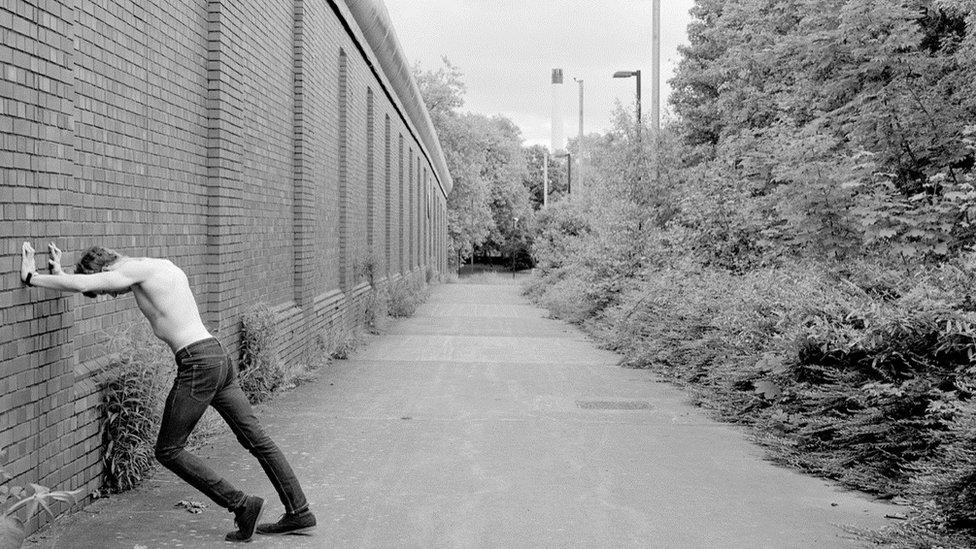
A canal and its towpath run close to HMP Birmingham
The second black and white image is of a relative by a Birmingham canal that runs near the prison.
"It's quite an idyllic access point for families by the prison, but you see all these evidence bags around on the floor from people who have just left the jail," he said.
"I wanted to take the families through different scenarios as they go through difficult times... it's all about absence."
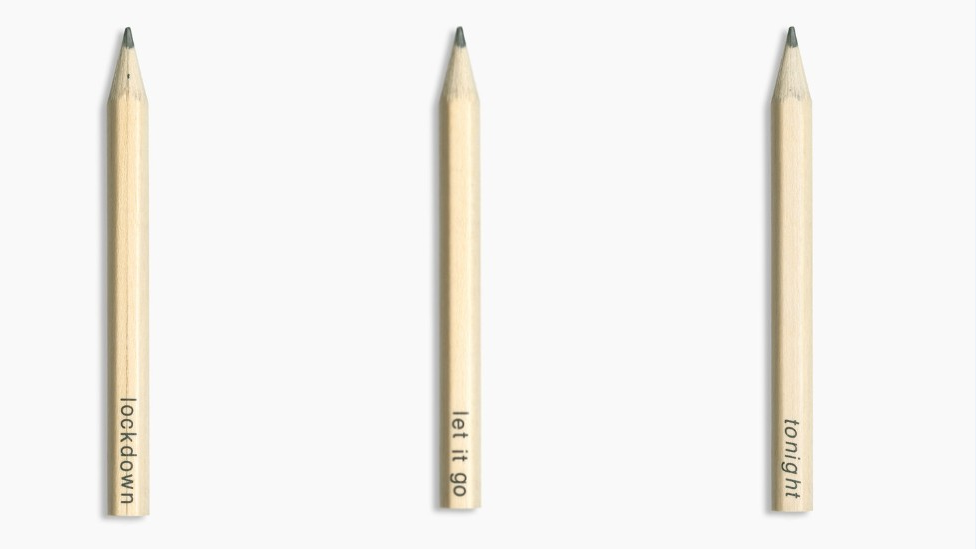
An inmate in the 1970s used to communicate by scratching messages on to pencils
Pencils represent some material confiscated from a prisoner in the jail in the 1970s.
"He was so notorious and was in solitary confinement quite a lot," said Martins.
"He would apparently get pencils from the guards and erase the brand name and stencil his own message, or a word on them and hand them to the guard or other inmates and communicate with people that way.
"He was only found out when someone tried the same thing at one of his trials - they sent him one that said 'plead guilty' on and this is my interpretation of that."
Martins has also used dozens of slide viewers from the 1960s and put passport photos of inmates and their families inside them next to extracts of an inmate's diary of his time in the jail.
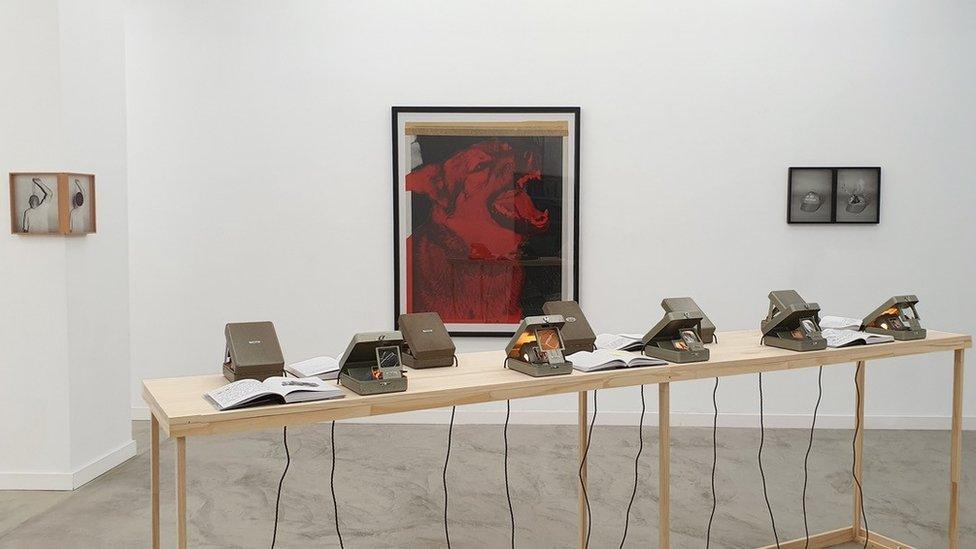
These slide viewers date back to the 1960s
The image of a balloon references 1960s Italian conceptual artist Piero Manzoni. He inflated a balloon for his avant-garde Artist's Breath piece, "breathing my my soul into an object that becomes eternal".
Martins said he asked a prisoner to blow into the balloon to include in his exhibition.
"This picture emphasises that I am a conduit between inmates and their families," he said.
"It's something subversive and making the reverse journey - someone blowing it up and me taking it outside the prison - all done officially of course."
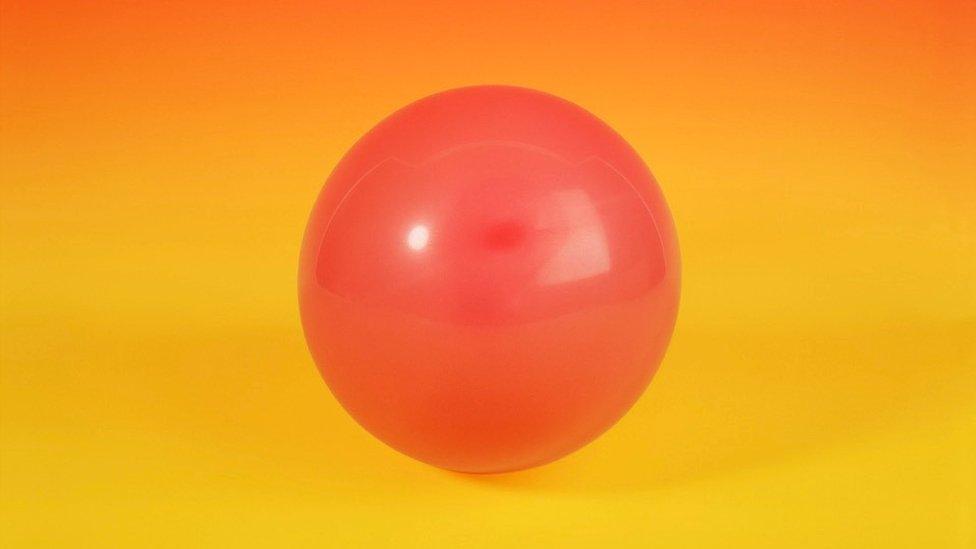
Prisoner's Breath was inspired by the work of Italian conceptual artist Piero Manzoni
Overall, Martins said he wanted his images to "counter and rethink" the approach the reality of prison life.
"By giving a voice to inmates and their families and addressing absence as a set of social relations rather than a mere physical space, my work tried to rethink and counter the sort of imagery normally associated with incarceration and confinement," he said.
"I went to great lengths to avoid images whose sole purpose, in my opinion, is to confirm the already-held opinions within dominant ideology about crime and punishment and to instead look at loss and absence."
What Photography and Incarceration Has in Common with an Empty Vase runs until 18 April at Herbert Art Gallery & Museum, Coventry

Follow BBC West Midlands on Facebook, external, Twitter, external and Instagram, external. Send your story ideas to: newsonline.westmidlands@bbc.co.uk, external
- Published30 March 2021
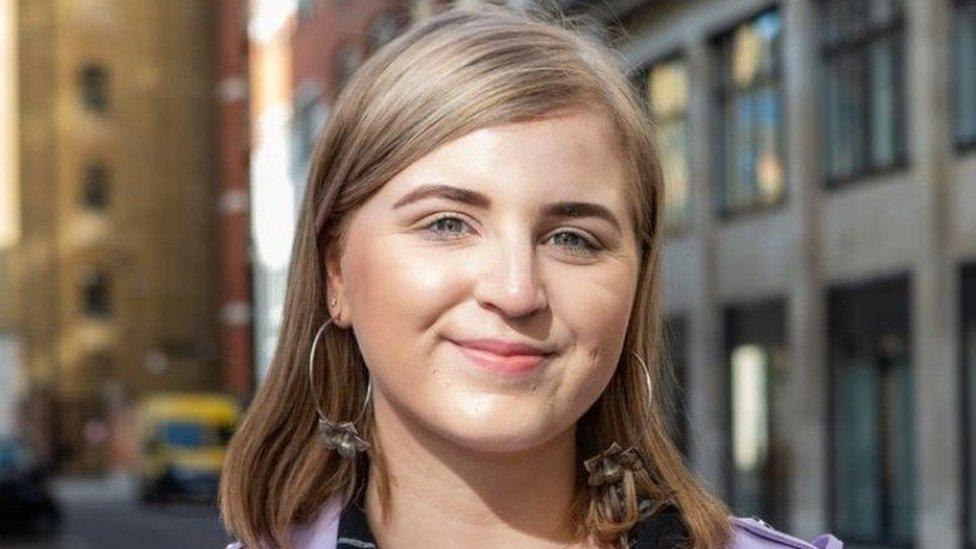
- Published3 September 2020
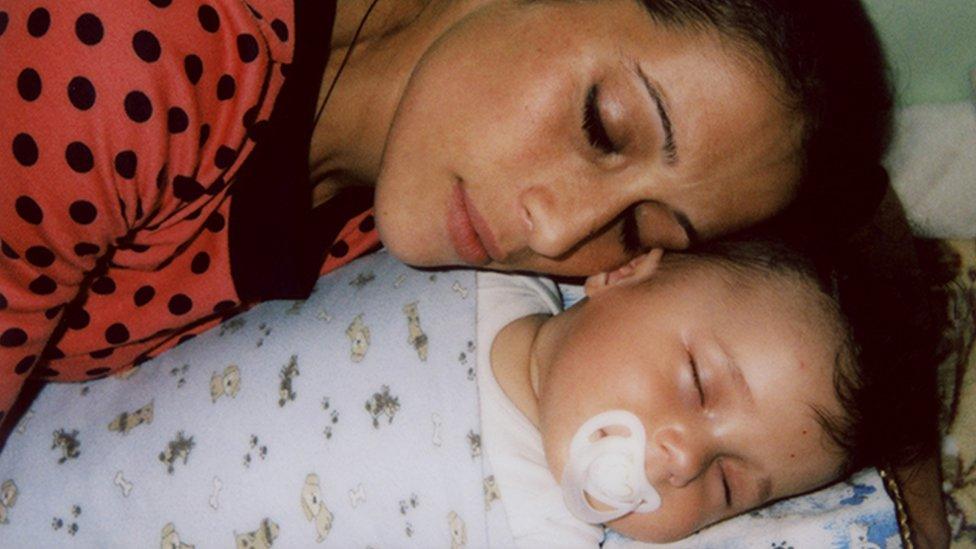
- Published17 August 2020
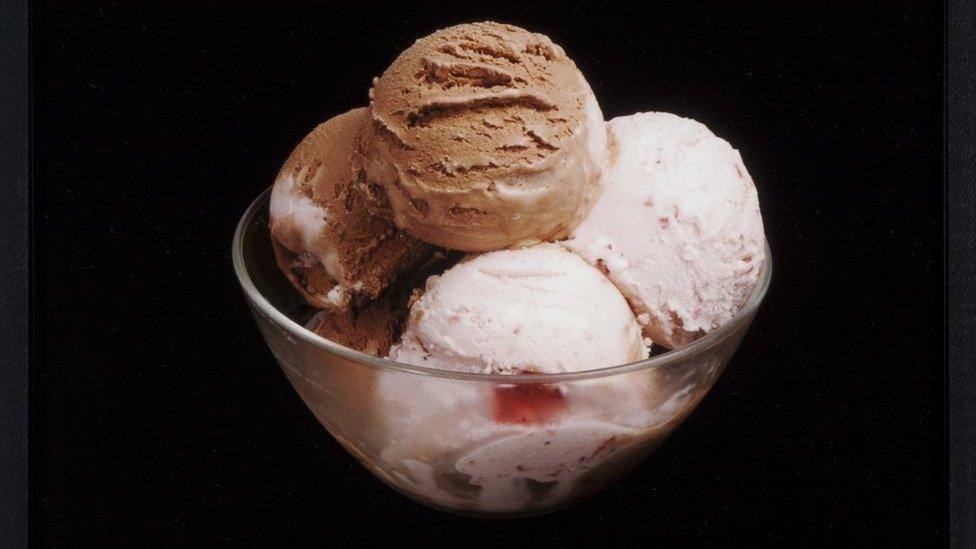
- Published15 September 2018
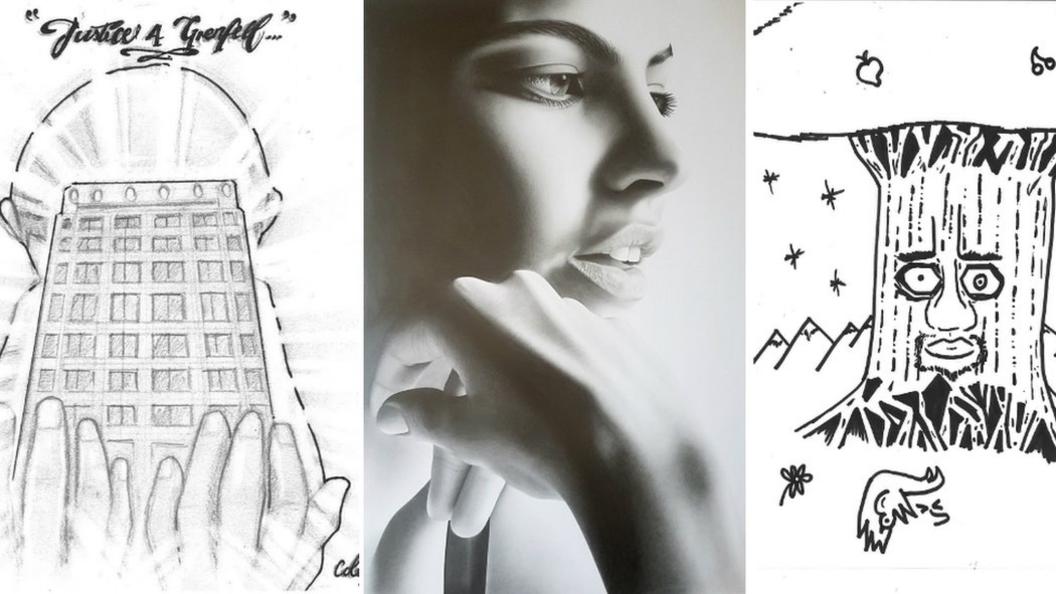
- Published16 December 2016
